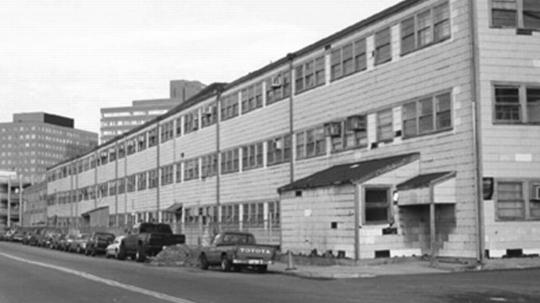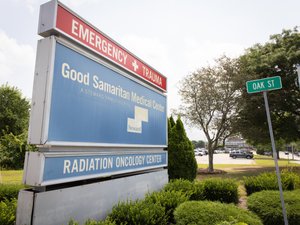
In 1998, the Massachusetts Institute of Technology knocked down a building that had been home to some of the greatest discoveries in the Institute's storied history of great discoveries.
Building 20 was never built to last. With plywood walls, it was originally erected as a wartime research center, designed to be dismantled within a few years. It stayed up for more than 50. Radar was invented there, as was the first Bose speaker.
Seventeen years later, Building 20 is an obscure legend, unknown to most, cherished in memory by few. But its success should serve as a lesson to city planners and tech-industry boosters in Boston and beyond, looking for the ingredients to build the next Kendall Square--the next Innovation District.
Branding is dumb: BostInno's Chicago cousin, Chicago Inno, ran down a list of all the hopeful monikers stuck on the map with hopes of becoming the next Silicon Valley. (Remember "America's Technology Highway?") These names have little impact, beyond telegraphing that government might be willing to offer a tax break. Building 20 was never called anything but Building 20.
Design Over-design is overrated:* When the wrecking ball swung on Building 20, MIT replaced it with the Stata Center, a 720,000-square-foot complex ambitiously designed by Frank Gehry, for which the university paid him $15 million. It was designed to foster collaboration in its public spaces and to inspire innovation with its unexpected turns and difficult angles. But its seams leaked, its stone crumbled and its drains backed up. In 2010, the Institute settled a lawsuit vs. Gehry for unknown terms. Building 20, which also leaked pretty badly, is said to have been designed in one day.
Talk to your neighbors: Building 20 was made of plywood, and nobody really cared what happened to it. When its tenants needed more space, they knocked down a wall. If they needed more power, they poached it from the exposed wires traversing the ceiling. People who were there remember a resulting spirit of collaboration and shared wonder that broke across the normal barriers between disciplines and job descriptions. "It was extremely interactive," linguist Noam Chomsky told MIT Technology Review in 2011.
When Boston dubbed its Seaport the Innovation District in 2012, it was one of the very first in the world. There are now more than 90 self-proclaimed "innovation districts" counted in the U.S. Boston's is widely cited among the most successful.
What many may not realize is that, when former Boston Mayor Thomas M. Menino cut the ribbon on the Innovation District in May 2012, the building boom was already under way. Five of the buildings you see built or going up today were already in the permitting process. The major tenants who've signed on were already crunched for space in Cambridge.
It's hard to predict where high-tech clusters will spring up, and it's probably impossible to engineer them. The next one might be springing up next door--or in the lab on the other side of your plywood wall. Unless you talk to your neighbors, you won't know anything about it.
Editor's Note: This is the first in a series of posts tied to BostInno's State of Innovation event, coming up June 16. More information below.
*Hat tip to @mwmoedinger.








